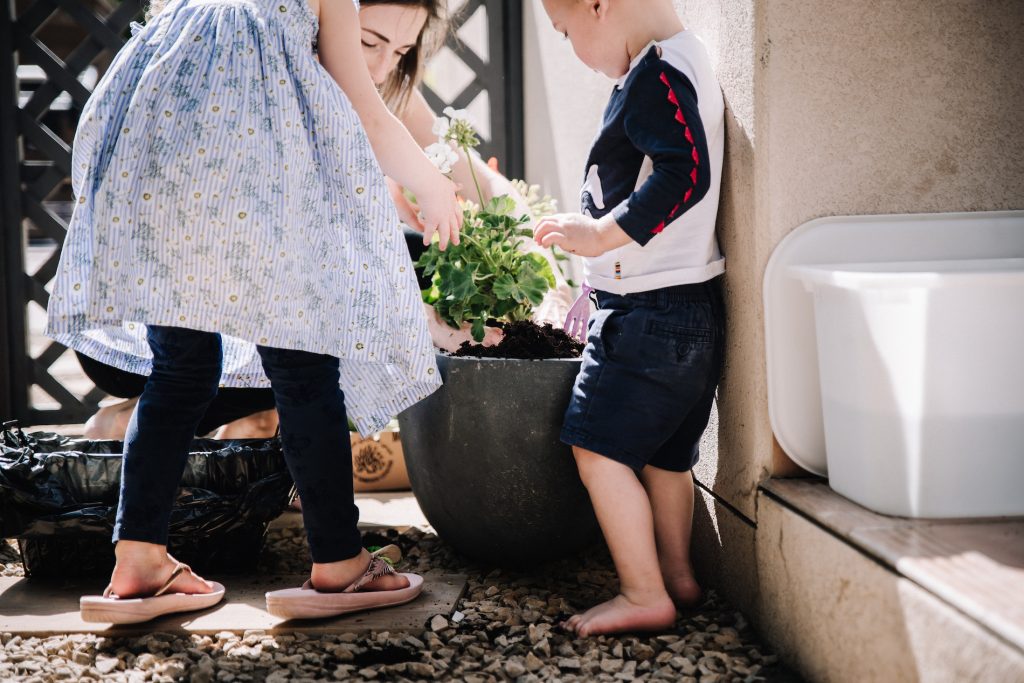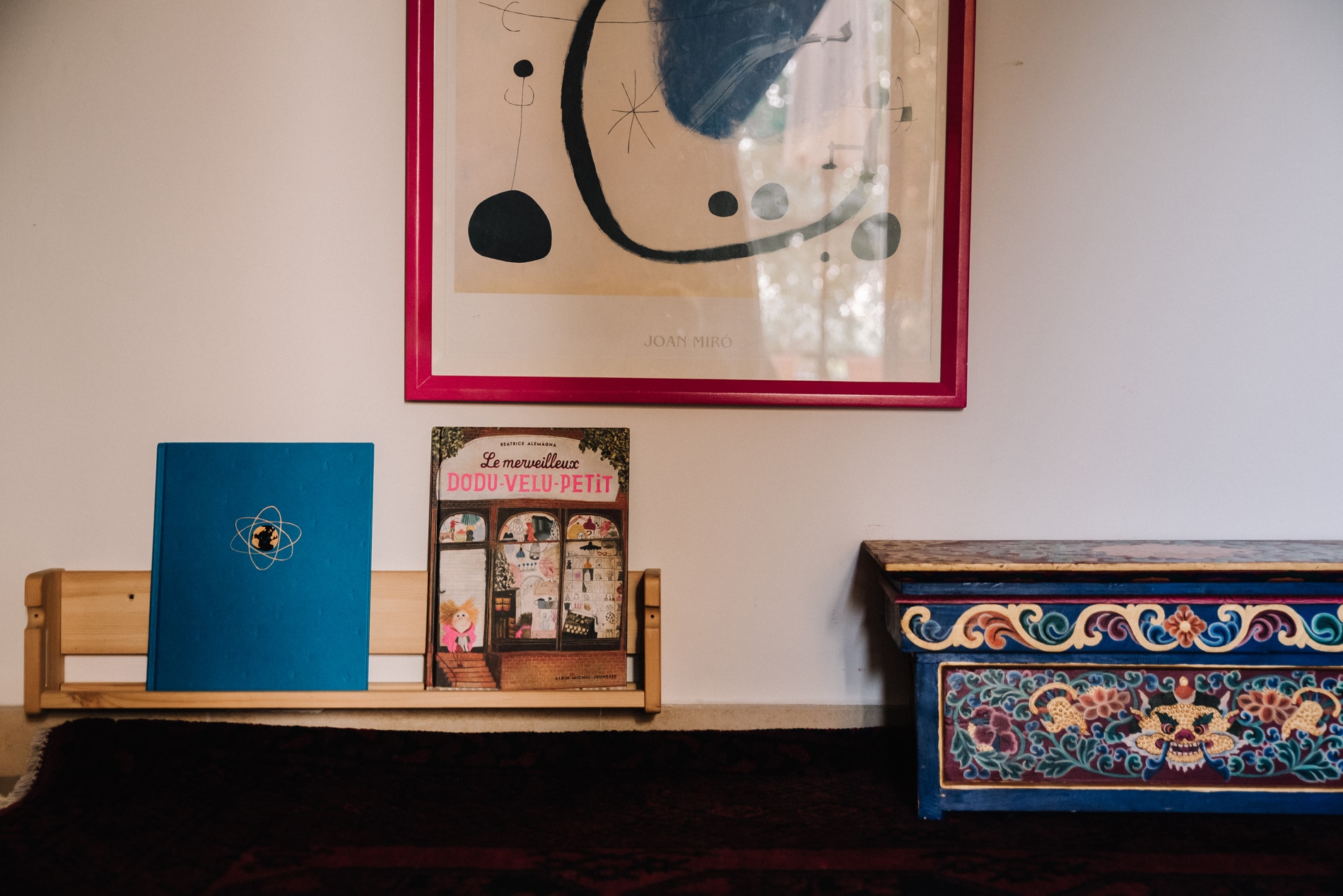Positive relationships are built from respectful communication.
The effectiveness of how we express ourselves is a measure of intelligence. A powerful gift we can give our children is the power to communicate: to communicate their needs, to stand up for what they believe in, to speak for others who cannot speak for themselves, to express their love, joy and passion for life. A conversation is more than an exchange of words.
From birth, every interaction with your baby is a dialogue, a place from which they learn the art of conversation, the exchange of talking and listening between two people.
We support our children in becoming effective communicators by recognising that a child’s brain will not function at the same speed as an adults until they are 12 years old. This means that until this age, whenever you speak to your child, she will need time to listen to your instruction, absorb it, understand it, then formulate a response.
So, we speak clearly and beautifully to our newborn. We have our eyes fixed upon them as we speak to them, so that they can see our lips move at the same time that they hear our words, and so that they can clearly see our facial expressions as we speak to them.
From the earliest days, newborns will mimic a parent’s facial expressions. So mimic the sounds your baby is making; have a ‘conversation’ with her. Using rich, expressive and gentle language together with speaking to baby face-to-face is essential.
Lots of repetition when speaking to your baby supports them as what is said to the child builds their neural pathways and they get to hear the pitch, tone, inflection and rhythm which is an integral part of human communication.
In periods of caregiving (changing, bathing etc) keep a running commentary of what you are doing. For example, “I’m going to lift your arm up so I can remove your pyjamas, then I’m going to remove your nappy. Ready? Now I’m going to pick you up to put you in the bath.”
We give our infant time to listen, absorb and respond to each phrase that we say.
The soothing and comforting familiarity of being talked through these caregiving rituals builds communication, lays the foundation for language development and builds trust between child and caregiver. A child develops a deep sense of being respected and honoured as the precious being that she is.
Offering choices – demonstrating that communication is a two way process
Communication with our children (and with anyone) is not just about what we say. Listening to what is said is equally important.

Offering choices to the young child is extremely rewarding for them and for you. How frustrating it must be for the child who is treated like a dolly, being dressed by an adult who decides what they wear, what they play with, Can you imagine this as an adult?
As a sentient being, a tiny baby deserves the opportunity to state her preferences to a parent who is open and receptive to hearing them.
With your tiny baby in the early days and weeks start to offer her a choice of which babygro to wear. You can do this when she is lying on her back being changed. Hold the babygros above her head, keeping your movements slow and your voice gentle ask which one she would like to wear, show her one and say, for example, “Would you like to wear the yellow babygro?” Hold it there for a few seconds, then show her the other one, asking, “Or would you like to wear the grey babygro?” Then hold both above her. Wait ten seconds: observe, feel, breathe deeply.
A newborn might move her eyes, focussing more on the one she prefers, or after ten seconds you might suddenly feel which one she prefers. With newborns sometimes the indications given are almost imperceptible.
The combination of the slow movements, language and waiting for her response is crucial. This will seem like an eternity, but it is imperative that we wait to listen to our child, and wait to hear what it is that she wants.
The tiniest baby will appreciate this respect that you are paying her. Very quickly she will come to expect these simple choices, and before you know it, your four month old will surprise you one day by grabbing her choice!
Once your baby is crawling, she will be able to crawl to a low shelf to make her own selection (still from a choice of only two items). Your Piccolini will be able to toddle to her wardrobe to select her own clothes hanging there. You can arrange her wardrobe as shown in the top image – just two choices for each item of clothing.
You can also offer her choices for which book she would like you to read to her, or which teddy she would like to be out next to her.
In listening to your child in this way and hearing her preferences and interests, she develops a positive sense that she is listened to, valued and understood. And perhaps what is most valuable for us as caregivers is it supports us in slowing down and really getting to know our child. Dedicating this time to the simplest of communication strengthens our bond with our child and humbles us as we see our child grow in confidence with this attentiveness and sensitivity to their needs.
Five steps to respectful communication with your child:
- Slow down your speech! A child’s brain does not operate at the same speed as an adult’s brain until age 12.
- Speak clearly, giving only one piece of information each time.
- Offer choices from the earliest days; your newborn can choose which babygro she would like to wear or which book she would like you to read to her.
- When offering choices, only offer two options and wait TEN seconds for her response.
- Caregiving moments (feeding, nappy changes and dressing) are precious bonding moments for building communication.

Similar Posts
- 17 September 2019 00:32
- 11 September 2019 17:50
- 9 September 2019 13:43




